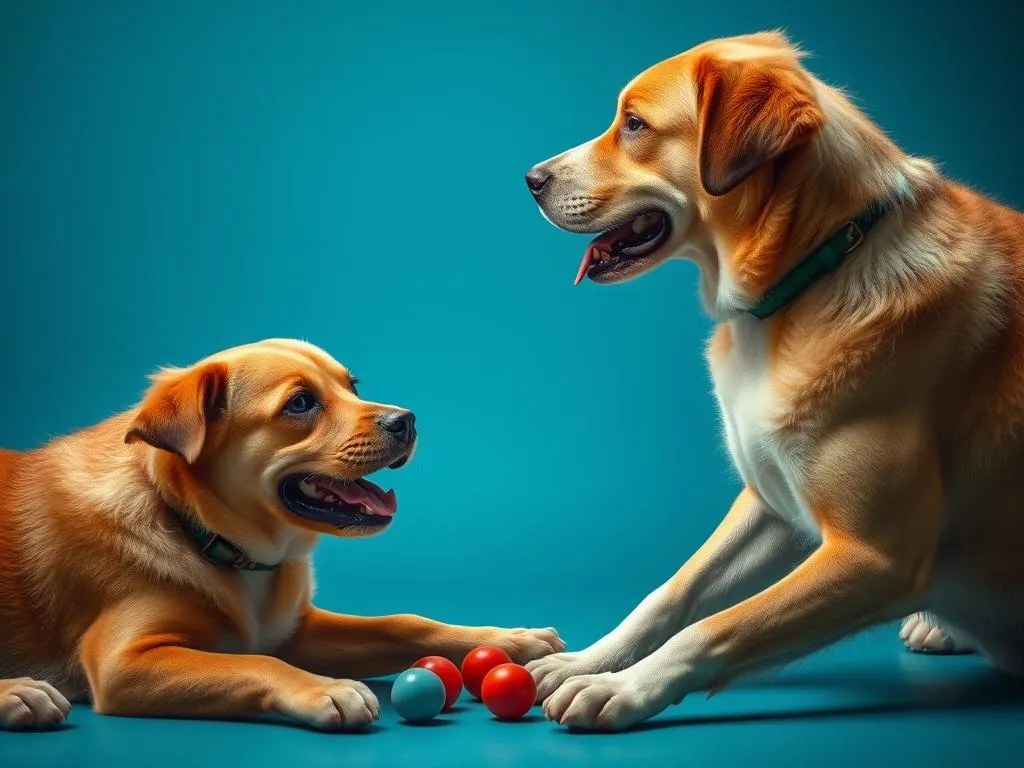
Introduction
Every dog owner knows the joy of having a furry companion, but with that joy can come challenges—especially when it comes to managing your dog’s behavior. One essential skill that every dog should learn is impulse control. This skill not only helps mitigate unwanted behaviors such as jumping, barking, and excessive excitement but also fosters a deeper bond between you and your pet. In this article, we will explore the concept of impulse control, its significance, and various engaging impulse control games for dogs that can enhance their training experience while making it fun for both of you.
Understanding Impulse Control in Dogs
What is Impulse Control?
In canine behavior, impulse control refers to a dog’s ability to resist immediate temptations in favor of more rewarding outcomes. It encompasses skills like waiting patiently, focusing on a task, and obeying commands, all of which contribute to a well-behaved pet. A dog with strong impulse control can manage its urges, which is crucial for daily interactions and training.
Why is Impulse Control Important?
Impulse control is fundamental for several reasons:
-
Training and Safety: Dogs with good impulse control are easier to train and pose fewer risks in potentially dangerous situations. For instance, a dog that can resist the urge to dash into traffic or jump on guests is safer and more manageable.
-
Social Interactions: Impulse control plays a significant role in how dogs interact with other dogs and people. A well-mannered dog is more likely to have positive experiences during outings at the park or doggy daycare.
-
Overall Well-being: Dogs that learn impulse control can experience reduced anxiety and frustration, leading to a more balanced and happy life.
The Benefits of Impulse Control Games
Mental Stimulation
Engaging your dog in impulse control games provides essential mental stimulation. Dogs are naturally curious and intelligent creatures, and games challenge their minds, preventing boredom. Mental exercise is as important as physical activity, and it can significantly improve behavior by channeling energy into productive outlets.
Strengthening the Human-Dog Bond
Playing games together enhances trust and communication between you and your dog. When you work on impulse control through fun activities, it creates shared experiences that strengthen your bond. This not only makes your dog more receptive to training but also fosters emotional benefits for both parties, enriching your relationship.
Behavior Modification
Many common behavioral issues stem from a lack of impulse control, such as hyperactivity or anxiety. Through structured games, you can effectively address these issues. For example, a dog that jumps excessively can learn to remain calm and wait for cues, leading to a more relaxed demeanor. Success stories abound where owners report significant improvements in their dogs’ behavior after incorporating these games into their routines.
Types of Impulse Control Games for Dogs
Basic Games
Wait for It
Wait for It is a straightforward game that teaches your dog patience.
Instructions:
1. Start with your dog in a sitting position.
2. Show them a treat but don’t give it right away.
3. Say “wait” and gradually increase the time before allowing them to take the treat.
4. If they move, return to the starting position and try again.
Tips for Success:
– Start with short waits and gradually increase the duration.
– Use a calm voice and body language to reinforce patience.
Leave It
The Leave It game is essential for teaching your dog to ignore distractions.
Instructions:
1. Hold a treat in your closed hand.
2. When your dog tries to get to it, say “leave it.”
3. Once they stop trying, reward them with a different treat from your other hand.
4. Reinforce the command in various situations.
Purpose: This game helps your dog learn to ignore tempting objects, improving impulse control in various environments.
Advanced Games
Puzzle Toys
Puzzle toys are excellent for enhancing your dog’s problem-solving skills while promoting impulse control.
Overview:
Various types of puzzle toys exist, from simple treat-dispensing balls to complex interactive games. These toys require your dog to think and strategize to obtain a reward, significantly improving focus and impulse control.
How They Help: By engaging your dog’s brain, these toys create a productive outlet for their energy and help reduce frustration-related behaviors.
Hide and Seek
Hide and Seek can be a delightful game that also reinforces impulse control.
Instructions:
1. Have your dog sit and stay while you hide somewhere in your home.
2. Call your dog once you’re hidden.
3. Reward them when they find you, reinforcing the importance of waiting for the cue.
Benefits: This game enhances recall skills and impulse control since your dog must remain calm and focused while waiting for your command.
Outdoor Games
Fetch with a Twist
Fetch is a popular game, but you can incorporate impulse control by adding rules.
How to Incorporate Impulse Control:
1. Before throwing the ball, ask your dog to sit and wait.
2. Only throw the ball once they are calm and focused.
3. Gradually increase the difficulty by adding distractions.
Tips for Gradual Progression: Start in a low-distraction environment and gradually introduce new elements to keep your dog engaged.
Obstacle Course
Creating an obstacle course in your yard or home can significantly improve your dog’s focus and restraint.
Designing a Home Obstacle Course:
– Use cones, tunnels, and jump bars.
– Guide your dog through the course while giving commands to sit or stay at various points.
Explanation of Benefits: This game helps dogs learn to focus on tasks amid distractions, reinforcing impulse control in an active setting.
Tips for Effective Training
Consistency is Key
Regular practice is crucial for developing impulse control in dogs. Establishing a training schedule—whether daily or several times a week—will help your dog internalize the lessons.
Positive Reinforcement
Positive reinforcement is fundamental to effective training. When your dog successfully completes an impulse control game, reward them with treats, praise, or playtime. The more positive experiences they have, the more likely they are to repeat the desired behavior.
Tailoring Games to Your Dog’s Needs
Every dog is unique, and tailoring games to your dog’s specific needs is essential. Assess your dog’s personality, energy levels, and learning style to modify games effectively. For example, a high-energy dog might benefit from fast-paced games, while a more laid-back dog may prefer slower-paced activities.
Common Challenges and Solutions
Distracted Dogs
If your dog is easily distracted, start training in a quiet environment and gradually introduce distractions as they improve. Use high-value treats to maintain their interest and focus.
Lack of Motivation
If your dog seems uninterested in games, try varying the rewards. Some dogs respond better to praise, while others may prefer toys or treats. Experimenting with different incentives can reignite your dog’s enthusiasm.
Time Commitment
For busy owners, integrating training into daily routines can be challenging. Quick games that require only a few minutes—such as “Wait for It” or “Leave It”—can easily be incorporated into your day.
Conclusion
Understanding and fostering impulse control in dogs is pivotal for their behavior and overall well-being. By incorporating a variety of impulse control games for dogs into your training regimen, you can enjoy a more harmonious relationship with your furry friend while also addressing behavioral issues. Start today by selecting a game that suits your dog’s personality and watch as their impulse control—and your bond—grows stronger!









